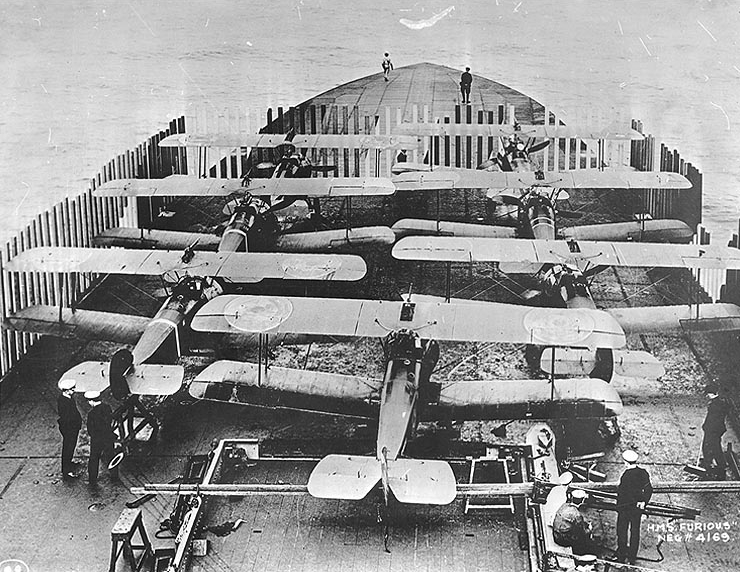The first successful landing on a moving ship was performed on HMS Furious by Squadron Commander Edwin Dunning in his Sopwith Pup, during trials in early August 1917. This followed the first successful landing on a stationary ship by Eugene Ely in 1910. Before that it had been mostly balloons rather than aircraft.
Mind you, while Dunning’s success no doubt heralded a great feat in aiming, flying and sailing, it was, after three goes, banned. The fact was that to land on HMS Furious a pilot had to not just negotiate a ship moving on choppy seas but also dodge around the massive flight deck. In fact, poor Edwin managed it a second time then died trying for his hat trick.
Given my love of all things maritime (I do like a good anchor) I was, frankly, amazed at discovering that I’d never heard of the amazing HMS Furious. I’d heard of the extraordinary Bermuda Floating Dock so why not the Furious?
Originally launched in August 1916, she was a converted Battlecruiser. While not that extraordinary, what she was converted into was. She was to become a launching pad for air raids on the German coast.
Being a Royal Navy ship in 1917 meant that the planes were part of the Royal Naval Air Service up until April 1, 1018. Then both the Navy and Army arms of fly-boys were amalgamated into the all new Royal Air Force. By this time, HMS Furious was being used to successfully annoy the German Zeppelins and the sheds in which they resided.
Then, on 19 July 1918, seven Sopwith Camels took off in order to raid Tondern, a German Airship Base at Tønder on the Danish coast.

(Originally there were to be eight planes but one of the pilots was ‘called away’ beforehand. It left no time to train another pilot so it was down to seven.)
The idea was for the planes to fly off in two raiding runs, bomb the hell out of as much of the Zeppelin stuff as possible then fly back. Unfortunately the day it was planned for was too stormy so they put it back 24 hours. Then, the next day, in the wee small hours, they took off for the coast.
The raid was only a minor success and if you factor in the loss of planes and one pilot, not so much. Still, for whoever had the idea of using the Furious as a floating aerodrome, it was a major success.
The pilot who died was Flight Lieutenant Walter Albert Yeulett. While some of the planes headed north to land in Denmark the others headed back to the Furious. Yeulett was in the latter group. However, he had difficulties with his plane and ditched in the sea. He died as a result of the crash. His body was recovered and buried in Denmark. He had only just turned 19 a month before.
Walter (Toby to his family and friends) was posthumously awarded a DFC for his great bravery. Small consolation but at least a recognition.
The whole HMS Furious Tondern Raid is a fascinating episode in a ridiculously pointless war. It shows the ingenuity brought out in times of military need.


